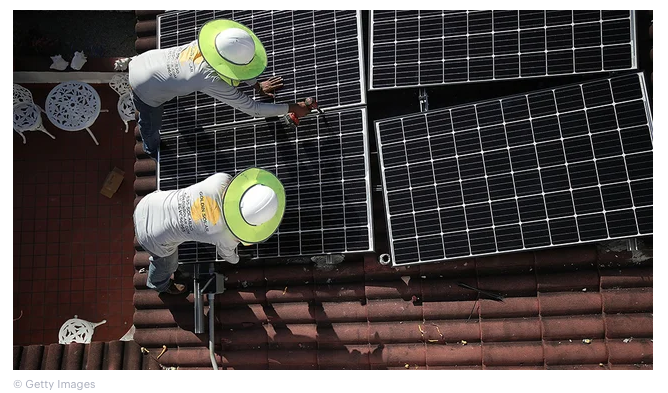On March 15, 2013, President Obama formally announced his plan to create an “Energy Security Trust” to promote research and development of clean energy technologies. The Trust was first mentioned by President Obama in his State of the Union address earlier this year, but he had not elaborated on the idea until the speech, given at the Argonne National Laboratory in Illinois. President Obama called on Congress to establish the Trust, and provide it with a total of $2 billion in funding over ten years, drawn from revenues from oil and gas leases granted on public land. The intention of the scheme is to “support American ingenuity, without adding a dime to our deficit.”
The Trust is part of the Obama Administration’s “all of the above” energy strategy, which aims to lower reliance on foreign oil, cut energy costs, create new jobs and reduce pollution and greenhouse gas emissions. The focus of the research supported by the Trust will be on “breakthrough” technologies that decrease the reliance of cars and other vehicles on gasoline. Suggestions for the projects that may receive funding from the Trust include the development of advanced batteries for electric vehicles, natural gas tanks, biofuels and hydrogen fuel cells. The idea for the Trust reportedly builds on suggestions received from a non-partisan group of experts, including CEOs and retired senior members of the military.
In his speech at the Argonne National Laboratory, President Obama noted a report on the fuel economy standards of vehicles sold in the US that had just been released by the EPA. While there is still progress to be made toward the goal of shifting away from gasoline as the primary fuel source for light duty vehicles, President Obama observed that in recent years there has been significant improvement in the fuel efficiency of cars and the range of green technologies available to consumers. The EPA report reveals preliminary estimates that for cars produced in model year 2012 there was a 1.4 mpg increase in fuel economy (compared to results for 2011), with an average fuel economy of 23.8 mpg. This represents the largest annual improvement since EPA began reporting on fuel economy in 1975.
However, as the EPA report notes, annual figures can be variable for many reasons. The fuel economy standards for model year 2011 were slightly worse than those of 2010, largely due to a reduction in the manufacture of cars and car parts in Japan in the aftermath of the March 2011 earthquake and tsunami. The EPA estimates that, if it were not for these tragic events in Japan, the results for model year 2011 would have been “similar to or slightly higher than” those for model year 2010, and that the annual improvement for model year 2012 would have therefore been more modest.
Trends over several years provide a more reliable indicator of progress in improving fuel efficiency than the results of any single year. During the period between model years 2007 and 2012, estimates are that carbon dioxide emission rates from light-duty automotive vehicles decreased by 13 percent, and that fuel economy values increased by 16 percent. The EPA report also noted that, compared with the situation five years ago, consumers today have twice as many hybrid and diesel vehicles to choose from, and that there has been a six-fold increase in the number of conventional cars that achieve a combined city/highway fuel economy of 30 mpg or higher.
The full press release on President Obama’s Blueprint for a Clean and Secure Energy Future is available here.


